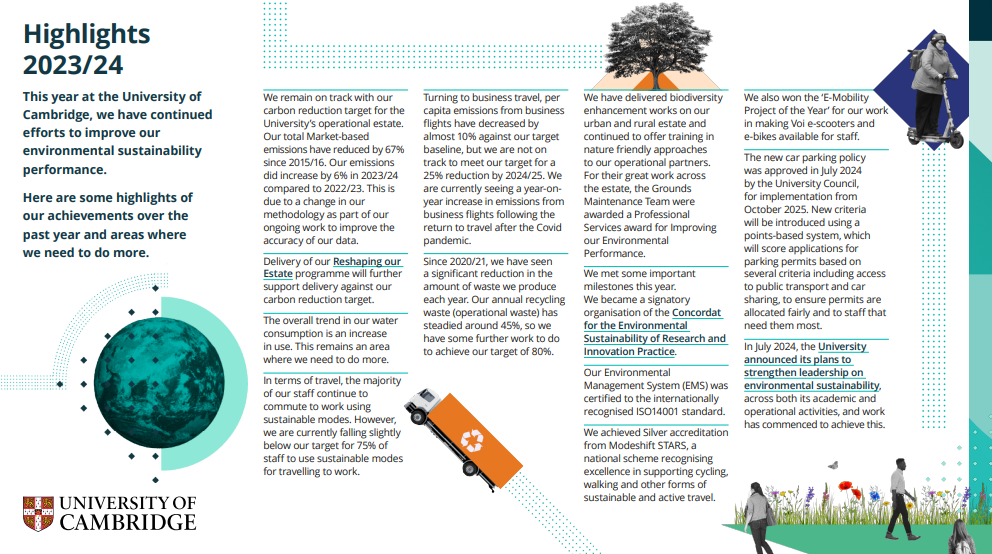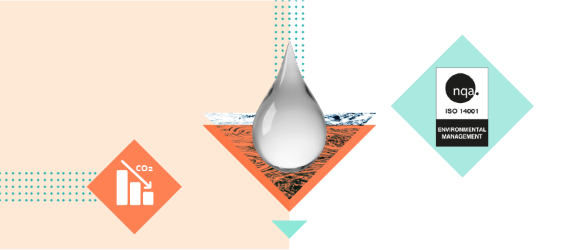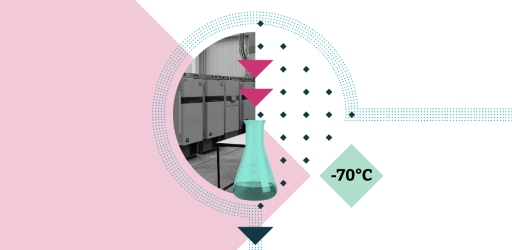Our progress
Here you will find the University's most recent operational:
- Carbon and energy progress
- Travel and transport progress
- Waste and circular economy progress
- Biodiversity progress
- Water progress
You can also read about the University's work on environmental sustainability in the University of Cambridge Annual Reports and Financial Statements.
We have created a dedicated page outlining Our progress in a format for the 2025 People and Planet assessment.
Highlights Summary
The Environmental Sustainability Highlights Summary for the reporting year 2023-24.
Case studies from around the University
Qualitative progress against our commitments can be found within our Case studies. Our three most recent are provided below.
|
David Attenborough Building: Outstanding environmental management
|
|
|
Clinical School Climate Forum: Freezing the way to sustainable labs
|
|
|
Driving Sustainable Finance: Banking Engagement Forum
|
Additional and historic data
All previous Annual Environmental Sustainability Reports and carbon emissions reports are available up to 2022-23. Our reporting approach changed from the 2023-24 year onwards to Our progress pages (the page you're currently on) to make information more transparent and accessible. Qualitative progress against our commitments can be found within our Case studies. These will both be updated on an ongoing basis as new data and material becomes available.
You can also read about the University's work on environmental sustainability in its Annual Report and Financial Statements. Further operational environmental sustainability information is available on request using sustainability@admin.cam.ac.uk




